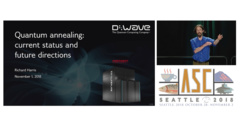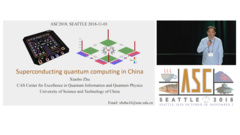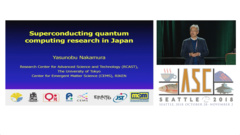One HTS Josephson Junction, An Array of Applications: Has anything come from HTS devices in the last 30 years?
In this talk from the Applied Superconductivity Conference 2016, Cathy Foley from CSIRO provides a review of the advances in high temperature superconducting (HTS) electronic devices in the 30 years from 1986 to 2016, with a survey of applications and an outlook to the future.
The discovery of high temperature superconductors (HTS) thirty years ago was heralded with great anticipation to enable a broad range of potential applications. However applications of HTS electronics are dependent on high quality Josephson junctions that have controllable transport parameters with high reproducibility in YBCO. A number of different technologies for junctions have been developed with a few (bicrystal, ion beam bombardment and step edge junctions) being effective. Based on these junctions, a number of device applications have been successfully deployed and in some cases commercialised. Starting with devices with no junctions such as filters for telecommunications, single junctions such as in bow-tie antennas and RF SQUIDs, two junctions for DC SQUIDs for magnetometers, gradiometers and a number of different detectors such for terahertz and most recently arrays of thousands of SQUIDs for SQIFs. This talk will overview the development of the HTS Josephson junctions in YBCO with a view to what is needed to achieve mass market application and adoption. Then I will review the most successful applications of HTs devices in filters, magnetometers and gradiometers for mineral exploration, metal in food detection, biomedical, defence and array antennas. The talk will finish with the need for standards and the ability to model devices to enable commercial foundry manufacture enabling the realisation of the thirty year dream.
In this talk from the Applied Superconductivity Conference 2016, Cathy Foley from CSIRO provides a review of the advances in high temperature superconducting (HTS) electronic devices in the 30 years from 1986 to 2016, with a survey of applications and an outlook to the future.
 Cart
Cart Create Account
Create Account Sign In
Sign In





